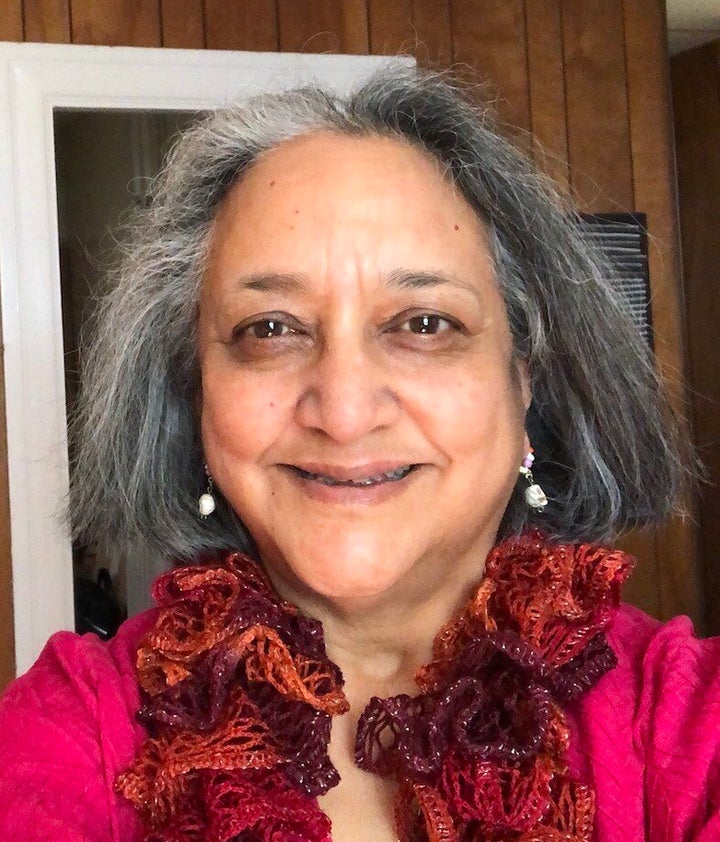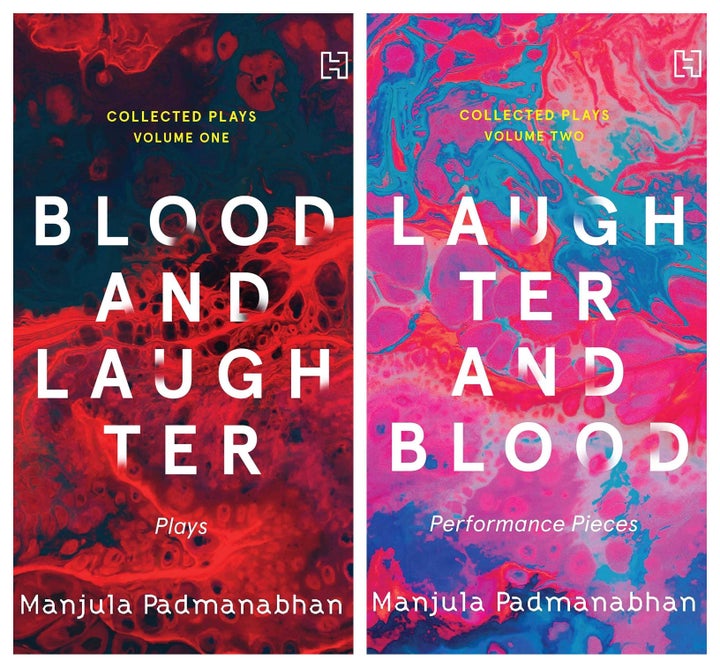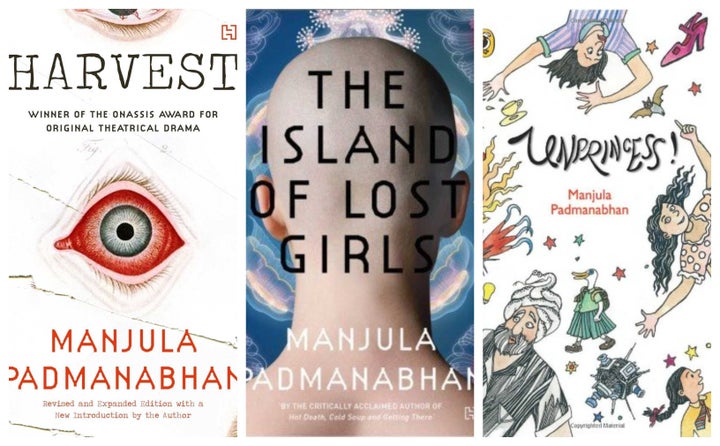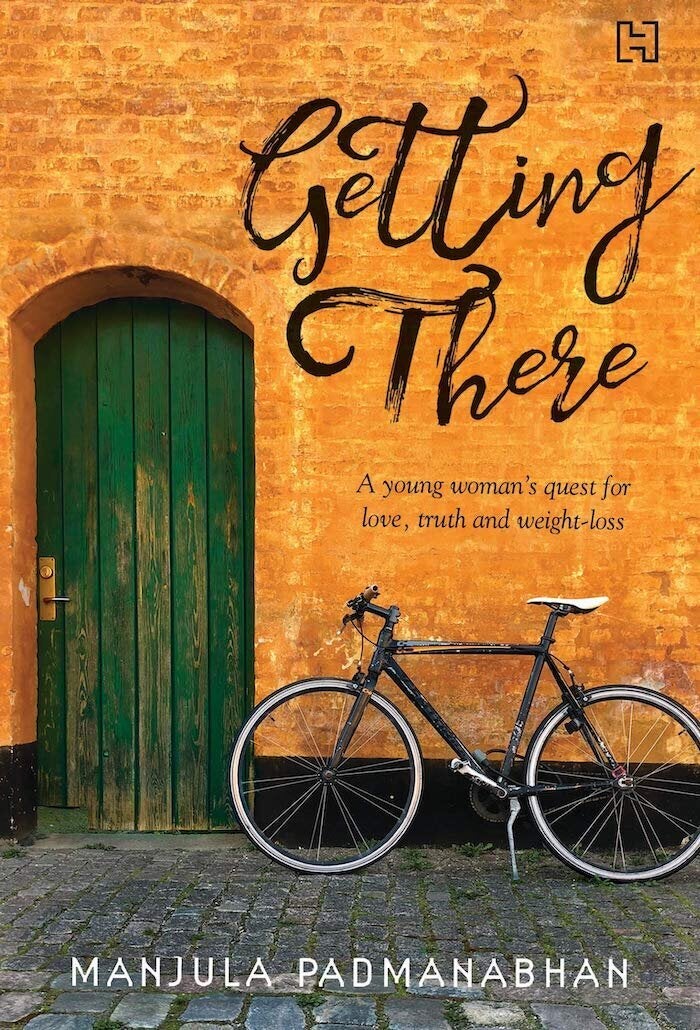
Manjula Padmanabhan is a picture of the stereotypical writer in popular imagination: solitary, self-contained, deeply self-aware, resolutely sticking to “nuance” even in this time of political binaries, and unconcerned about the market’s demands.
She enjoys, sometimes suffers, the obscurity of a quiet genius — “stubbornly,” she says.
Few people have read her work, fewer still have understood and appreciated it. For weeks before our scheduled phone call, as I found myself engrossed in her writing, I wondered whether the problem was that her work was too ahead of its time. Now, though, it seems like the world may be catching up to her.
Hachette India has just republished Getting There, Padmanabhan’s 2000 travel memoir, and a two-volume collection of all her plays. A complete collection of her comic strip Suki is in the works. These are the highlights of her life’s work, which spans mediums and genres. She has written wild, surreal short stories, dystopian novels and children’s books. She is also a painter.
“I’m not a popular writer and I know that,” Padmanabhan tells me. But, she says, “I’ve always had high value for myself.”
She seems optimistic about these three new books. The new edition of Getting There is truer to what she had originally intended than the first edition. The play collection — Blood and Laughter and Laughter and Blood — is “a much bigger watershed because it represents work I’ve done over 30 years,” she says.
Padmanabhan, now 67, is waiting out the pandemic alone in a tiny rented apartment in Newport, Rhode Island, where she has lived for the last ten years. She is amused by a strange busy-ness, a new first, in her life. She has become a member of an artists’ collective — “Of course it would be my good luck,” she says sarcastically, “that I would sign up in the very year that there’s a pandemic and the art market has failed.”

To understand Padmanabhan’s trajectory as an artist is also an undertaking in the story of the arts in modern India at the turn of the century. Her unconventional, often startling, work was perhaps eclipsed by the mushrooming of mass culture at the time.
In the 80s, Padmanabhan’s work as an illustrator was definitely noticed — though not always in a way that would make a young artist happy. Her comic strip starring Suki, a curly-haired woman who responds philosophically to the meanderings of modern life, was loathed by many readers of the Sunday Observer, where Suki ran for six years. People would threaten to cancel their subscription if she kept appearing. “She gives me dyspepsia,” someone wrote in. “The violent attacks were really cute and funny as compared to no response at all,” Padmanabhan says of the later runs of Suki in The Pioneer, where it appeared for five years until 1997. But things have changed now. When Suki was revived after 19 years by The Hindu’s Business Line, Scroll called it “everyone’s favourite young woman from the comics.” Interviewers ask Padmanabhan quite fondly about Suki. She doesn’t hear much from readers anymore — possibly because she rarely posts the strip on social media — but is content knowing that its followers are essentially a small “club of people who get it and who enjoy it.”
The comic strip taught her how to write dialogue and possibly helped her become a playwright. Her first play, written in 1984, was based on an eyewitness account — that she heard from a friend — of a gang-rape. The incident had occurred in 1982 in Santa Cruz, Bombay, and witnesses had been warned against reporting it. Lights Out is set in a Bombay apartment, where a couple’s dinner party is punctuated by screams from a well-lit parking lot next door where a gang-rape occurs every night. In the apartment, the women are distraught, the men curious and ponderous. “To watch a crime and do nothing is to be — what? — involved in it yourself?”
The play was a success and was performed soon after. This is unusual for new plays, Padmanabhan later learnt. It would be 14 years before she’d have another one of her plays performed on stage.
The theatre market in the Indian economy is very specialised — it is rare to find financial support for new work. By the 1980s, a decline had set in theatre itself, with audiences diverted to commercial cinema. Things were bleaker still for English theatre, especially in Delhi where Padmanabhan lived. Without Hindi, she couldn’t belong. “I don’t think groups in theatre or in the arts find me easy to absorb,” she says.
Padmanabhan was a Third Culture Kid — she had grown up abroad, moving countries every few years before her diplomat family returned to India in the 60s. She spoke only English and felt like an outsider, an “alien”, she says.
“If I were more ambitious, I would have just made myself belong, just for the purpose of getting through,” she says, “I would rather think, ‘Oh, I don’t have to bother’.” She finds this difficult to explain — “because I do have to bother. Everyone has to bother. Everyone has to be concerned about fitting in somewhere.”
Persistence is the most essential tool of an artist — more than talent, even more than skill. Padmanabhan says it is her stubbornness that kept her soldiering on. She didn’t think she would make it, because she could see her work wasn’t commercially viable. But, “at the same time, I continued to have ideas”.
One of these ideas came from news articles about the illegal trade of human organs. Padmanabhan saw an ad in the newspaper about a play competition. She put aside everything she was working on and finished three months of comic strips in advance to write a sci-fi parable set in the near future — right about now — where an unemployed man decides to sell his organs. In 1997, Harvest won the Onassis Award, chosen from 1,470 entries from 76 countries. It came with a cash prize of $250,000 (Rs 90 lakh at the time).
The creative economy is a complicated thing that befuddles especially its own members. Art is supposed to exist in a realm free of bourgeois concerns like money. And yet, artistic success is most often measured in the market. “Money is also a confirmation that the society you belong to believes in you,” Padmanabhan says. Practising art can be even more alienating without this support and validation.

Padmanabhan was 43 when she won the Onassis Prize so she understood, she says, that the award mostly meant that she “had been saved from the dungeon of absolute failure.” It also freed her — at least for a while — from being “forced to only do the kind of work that could earn some money.”
So she set out to write the book she had always wanted to: a travel memoir about a journey she had gone on in her 20s — and one she had been reflecting on for nearly two decades.
In the late 70s, 20-something Manjula Padmanabhan went on a trip — first to the U.S. with her then boyfriend and then to Europe alone to visit two Dutch men she had befriended in Bombay. Alone, practically squatting, in an abandoned building in Holland, she had had a kind of revelation.
The resulting memoir, Getting There, has often been compared by recent reviewers to Elizabeth Gilbert’s bestselling book that appeared several years later. But if Eat, Pray, Love was about female pleasure, Getting There is a tightrope between the denial and pursuit of that pleasure. Gilbert’s 2006 memoir was about a trip she went on after her divorce in New York. In Italy, she discovered the joys of eating, in India, she found inner peace and in Bali, she fell in love. Padmanabhan’s is the opposite — a Diet, Plan, Numb if you will. It is about a young woman trudging headlong into adventure without a plan — or giving too much of a damn. She starves herself to lose weight in Bombay, binges on junk food while avoiding her boyfriend in the U.S., and carelessly floats around Europe where she lives with mostly strangers.
After the trip, she says, “I was very conscious that I had been reprieved from many nasty things that could have happened… I told myself that as a sign of that gratitude, I would write about it as a way of acknowledging the whole experience.”
Foreign publishers, after discovering Arundhati Roy’s The God of Small Things, were desperate to find new Indian voices. Getting There, published in 2000 by Picador UK, had all the trappings that should have worked in the new millennium. And yet, it disappeared without a trace.
“The book looked like a failure,” says Padmanabhan.
Her publisher saw its potential less as an autobiography and more as a novel. But for the writer, it was “so obvious that it’s not fiction, that I just lost… I just felt betrayed and didn’t know how to save myself from that.” The book was eventually published in this in-between place, neither novel nor memoir, with a sad, shabby little cover. “I had grown so dispirited… At the time, I couldn’t quite understand why. But it lost energy. It came onto the market with no energy.”
The book had also emerged in the aftermath of “that peculiar shadow that falls upon people who have succeeded in one sense, but not in the other sense,” she says.
“I’m not a popular writer and I know that... (But) I’ve always had high value for myself.”
- Manjula Padmanabhan
Earlier this year, music composer AR Rahman and sound designer Resul Pookutty who had won an Oscar each for Slumdog Millionaire, spoke about the difficulty in getting work in Bollywood after winning the award. Padmanabhan laughs when I tell her this.
Harvest was not liked in India, she says. It was considered too unusual. “Theatre professionals were only hardened and became even more convinced that my work was not something they needed to pay attention to because, ‘Oh, well, you know, it’s gone on and won an award abroad’.” It was eventually adapted into a film — Deham — by Govind Nihalani. But that too received poor reviews.
The new edition of the memoir, Getting There — A young woman’s quest for love, truth and weight loss, is the kind of book I would like to thrust in the hands of every young Indian woman I know. I ate it up like I haven’t a book in years — I stayed up nights turning its pages, stunned every so often by the discovery of my own self through the protagonist of this incredibly self-aware book.
Padmanabhan is not surprised that there was no audience for the book in the early 2000s. Indian readership was changing direction after the invention of the engineering campus novel. In that background, Getting There — which is anti-traditional in the sense that it “occurs outside traditional life” but at the same time, “It’s very quiet. It’s not revolutionary. As a character, I’m not revolutionary” — got kind of lost.
But she hopes to find readers in this new edition to which she has made changes so it reads closer to the book she had originally intended it to be. “Now, very many more young women have, in fact, taken chances, risked their careers and their professions and their lives and their happiness by doing things that go against their family. And I suppose that many have, like I did, begun to realise that you can defy everyone and nothing happens.”

Poulomi Chatterjee, publisher of Hachette India, who was also the editor on the new edition of Getting There, had read the first edition and “loved everything about the book.” But she knew over many conversations that Padmanabhan had been dissatisfied with the way it was published. Among other things, “the ending for her was too pat, rounded off – and life is rarely so. I hadn’t really thought about it this way until she told me,” Chatterjee says. It had ended with an epiphany. The new edition circles back to Bombay, bringing to the narrative “a completely new understanding,” she says. “To me, it became a new book.”
Padmanabhan, Chatterjee agrees, has “always been very much ahead of her time.” But Getting There, she feels is just one of those books that “is so very relevant to any reader, anywhere, at any time. Ever so often in our fraught lives we forget to simply breathe and allow ourselves to be, to freefall, to get through to ‘get there’. This book tells you how — without ever really saying it.”
The theme that is directly explored in Getting There is the body — and how it weighs on the mind. In the first section of Getting There, set in Bombay, Padmanabhan writes of feeling “inconsiderate, incompetent and self-indulgent. I was fat, after all… I could feel the rolls of unused hours lying in unsightly heaps across the sagging belly of my days” — she follows a strict diet and marches on the spot for 45 minutes twice a day. Later in the U.S. — numbed by the growing weight of emotions she refuses to deal with and surrounded by food — she loses that resolve and eats “until the silence within and the deafness without were in perfect balance. Feeling like a blimp with a thin film of consciousness printed on its outer surface,” falling “into a bloated sleep.”
For years after her trip, Padmanabhan tells me, she attempted to regain that sense of control she had at the peak of her diet. “It’s actually quite difficult to fit comfortably into a state of body that is both comfortable for you and comfortable for others,” she says. By her late 30s though, she says, “Your parents have given up on whether or not you’re going to be married. So then they also stop hassling you to look nice in order to attract — the hidden text that you need to look good in order to attract — a guy. And as you age out of the marriageable age, then it doesn’t matter that much.”
Padmanabhan almost never talks about being married. In a recent interview, she said, “I am very happy to be alone, even though I am not really single.”
I bring up her private life awkwardly. “It’s one of my secrets,” she says, “Well, it’s not a secret… I am married.” Her partner Ethan Stein — they’ve been married for nearly 20 years — is spending the lockdown in their home in Delhi where he grew up (his father was the architect Joseph Stein). “He’s in Delhi and I’m here. I’m very protective of my solitude and so is he… It’s nice when we’re together. We talk two or three times on the phone every day — for hours. I’m very happy that he’s there. I’m glad that he’s somewhere and that’s quite enough for me,” she says.
She worries about the assumptions people make when they discover a woman, especially an artist, is married. Primarily that she has no need for money, that writing is just a hobby.
“We help one another, but we don’t pay for one another. He doesn’t pay for me. I pay for myself and always have. I’ve been supporting myself since 21. People assume I have parental support in some form, but I don’t. I don’t have a safety net. Getting that prize for Harvest was the single and only source of a large sum of money I have ever had,” she says. This means, she says, that she cannot live in the way of a middle-class person. She doesn’t own property or a car. “I’m not writing for fun. I write because it’s what I do. But also because I need to earn a living.”.
“How have I produced so much work? — Because I was always running from the shark,” she says.